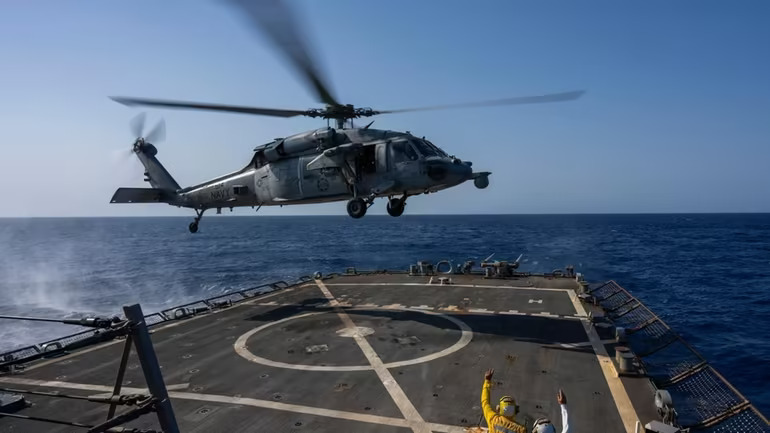The U.S. Navy, historically prepared for major global conflicts, finds itself embroiled in a prolonged and intense maritime battle against Iran-backed Houthi rebels in Yemen.
Previously focused on potential adversaries like Russia and China, the Navy now faces a persistent threat from the Houthis, whose arsenal has evolved from basic weaponry to sophisticated drones, missiles, and other advanced systems.
This conflict has significantly disrupted shipping routes in the Red Sea, which is crucial for access to the Suez Canal and the Mediterranean, with over 50 vessels targeted since November.
The Houthi attacks, ostensibly aimed at supporting Palestinians in Gaza and strengthening their position in Yemen, pose a serious and escalating danger to U.S. ships, allies, and commercial vessels.
The Navy’s response has been constant vigilance and rapid reaction, exemplified by the Arleigh Burke-class destroyer USS Laboon, whose crews face daily threats of missile barrages and drone attacks.

The intensity of these engagements marks the most sustained combat for the U.S. Navy since World War II, presenting challenges akin to the “Tanker Wars” in the 1980s but with more direct and frequent assaults.
The operational environment remains hazardous, recalling past incidents such as the 1987 USS Stark attack and the 2000 bombing of the USS Cole, underscoring the persistent dangers faced by naval forces in the region.
The Houthis’ capabilities have grown with Iranian support, including financial aid, intelligence, and training, despite international sanctions aimed at curtailing such assistance. The conflict has also escalated in the air, with airstrikes targeting Houthi infrastructure in Yemen and retaliatory measures against naval assets.
Despite these challenges, there is strategic caution in direct U.S. military escalation against the Houthis, influenced by broader regional dynamics and efforts to reduce tensions with Iran.
The U.S. Navy’s role remains pivotal, balancing deterrence and defensive actions while maintaining regional stability. Meanwhile, Saudi Arabia, engaged in a prolonged conflict with the Houthis, seeks diplomatic solutions while neighboring states navigate complex geopolitical considerations around U.S. military presence and operations.
Economically, the conflict has taken a toll, affecting vital shipping lanes and revenue for countries like Egypt that are reliant on the Suez Canal. The strategic implications extend beyond immediate naval engagements, influencing regional alliances and perceptions.
Despite calls for more decisive action against the Houthis, the U.S. approach remains calibrated, reflecting broader geopolitical realities and ongoing diplomatic efforts.
As the conflict continues to evolve, the Navy’s commitment to safeguarding maritime security in the face of evolving threats underscores the complexities of modern naval warfare and U.S. strategic interests in the Middle East.
